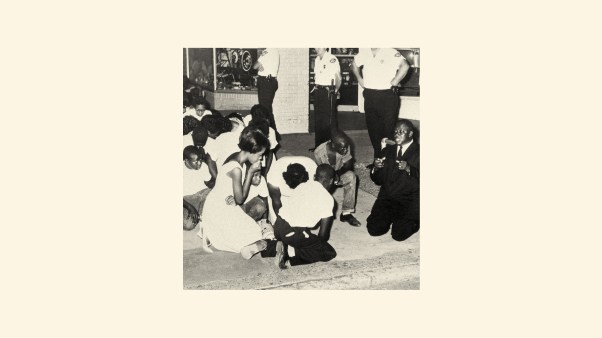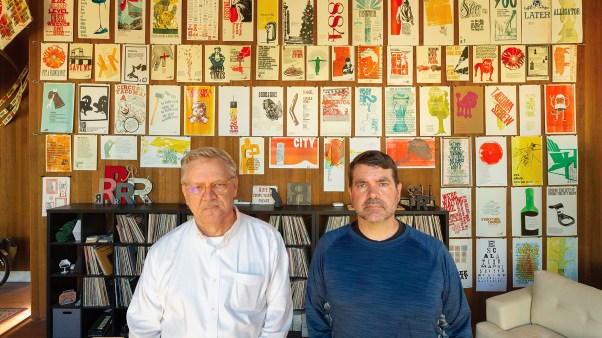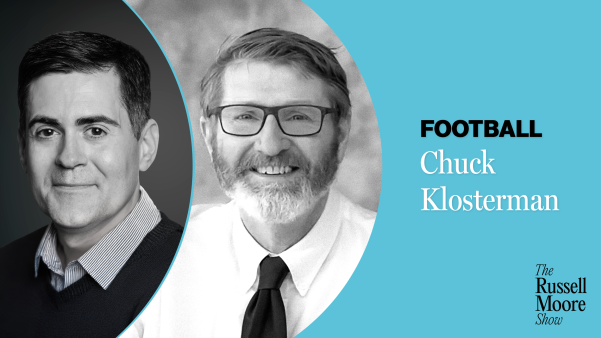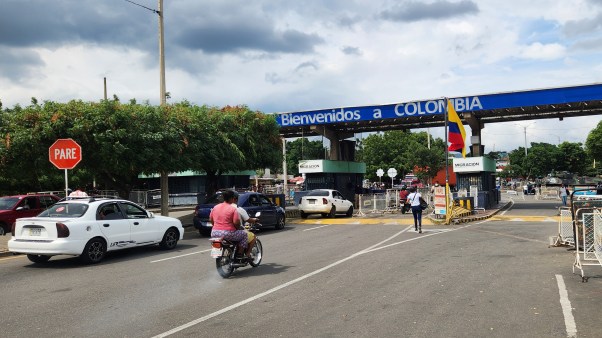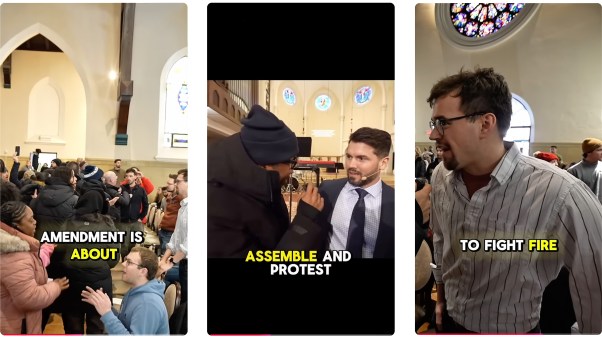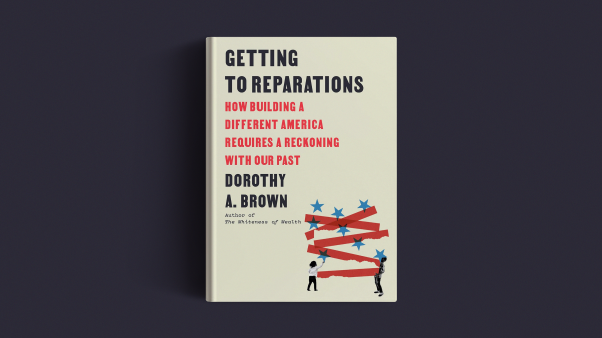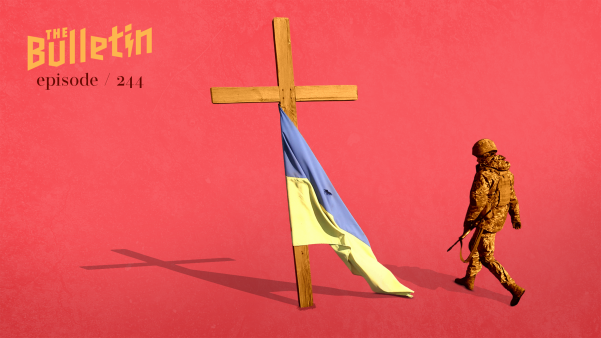I sigh and look at the remains on the table in front of me: a pile of bones, muscles, ligaments, and organs. They are signs of dissecting, learning, and integrating knowledge. At the end of the semester, the cadaver still looks like a human being, but it takes more effort to see it. The teaching it has provided is finished. It waits to be returned to the body donation program to be cremated. If the family chooses, the remains will be returned to them.
I have for decades traveled this journey: beginning with an untouched cadaver, working through successive dissections to identify the structures making up the body, and then reaching the end. As much as I love this journey, I still wonder what it all means. What is the sum total of these parts? The cadaver seems less and less a human being as we progressively move toward deeper and deeper structures. We lose something along the way. What do we gain?
Ironically, this time in the semester often falls around Easter. For all of the parts of the Passion story that inspire so many people, I find myself thinking most about the burial, the empty tomb, and the first realization that Jesus’ body was gone.
When the students are not here, the anatomy lab is completely quiet. It is just me and the cadavers and the soft background noise of the airflow system in the lab. I wonder about these cadavers and the lives they led before their journey brought them here. I wonder who waits for their remains, and I silently thank them for allowing us to learn a little more from these lives.
In the biblical story, I wonder about the stillness that followed the beatings, the Crucifixion, and Jesus’ death. What was that time like for the women who cared for Jesus’ body? For the disciples?
The Book of John poignantly tells the story of Jesus’ burial and the empty tomb. First, he was not buried by any of the twelve disciples but by Joseph of Arimathea and Nicodemus. Both are described as “secret disciples” (John 19:38–39). Going to Pilate and asking for Jesus’ body less than a day after the Sanhedrin had ruthlessly plotted and sought Jesus’ death would be a risky, bold statement for two who had tried to stay in the shadows. I wonder: What prodded them to action? We may never know. But whatever the reason, they were moved beyond fear to care for Jesus at a time when those closest to him were not able to.
According to John, they carried about 75 pounds of spices (v. 39) to care for Jesus’ body. This is an excessive amount, reminiscent of the anointing of Jesus with perfume. In the anatomy lab, we also “anoint” the cadavers with fluid. According to anatomy students, the smell of propylene glycol and phenol in our wetting solution is a pungent reminder of the anatomy lab. It permeates the nostrils as well as one’s clothing and remains on the skin even after leaving the lab. Joseph and Nicodemus brought aloe and myrrh. I do not know if this combination smells any better than our wetting solution, but I would not be surprised if this smell was an unmistakable odor of death and burial.
Joseph and Nicodemus also wrapped Jesus’ body in linen cloths (v. 40). It was customary to wash the body before burial. However, blood that left the body during death could be considered “life-blood” (Gen 9:4)—blood of atonement that would have been seen as sacred and would not have been washed away. After Jesus’ death, then, the blood shed through the beatings, the scouring, and the crucifixion itself may have been left where it was.
The bodies in the anatomy lab are definitely cleaned before they arrive in our facility, and their hair is shaved. But they can still retain reminders of their life—polish on fingernails or toenails, tattoos. For whatever reason, it has been common in my experience that the bodies are wrapped in a single, long, white sheet.
During one period of time when I worked in the anatomy lab, I also cared for the altar at church. I realized I was making the same motions with a white cloth to cover the altar and to cover the cadavers at the end of the day. That caught me by surprise, and at first seemed more than a little odd. But it became a comfort and a vivid reminder to me, when I work with cadavers, to care for them as Joseph and Nicodemus cared for Jesus.
Jesus was not buried in an unmarked grave but with dignity in a new tomb. The idea of a cave as a burial site goes back to the Old Testament, when Abraham purchased a cave to bury Sarah (Gen. 23). In Jewish culture, when someone could not be buried in the family plot at the time of death, it was the custom to bury them until only the bones remained. The bones were then collected in an ossuary and taken back to the “land of their fathers.” When Joseph died in Egypt, he made his sons promise to take his bones with them when they eventually returned to Israel (Gen. 50:25). Jesus’ body did not decay to the point of becoming bones. But through the ascension, his resurrected body returned to heaven, to the “land of his Father,” fulfilling the ancient Jewish custom.
John’s gospel tells us that early on Sunday morning, Mary Magdalene came alone to the tomb (John 20:1). It was Jewish custom at that time to watch the tomb for three days following death to make sure someone had really died. Even now, with technology to monitor heart rate and brain function, time of death can be difficult to determine. So Mary came to continue the vigil. The events of the crucifixion had most likely imparted the certainty of death, so her vigil may not have been in hope for a resurrected Jesus. After events that traumatic, it may not have been clear how anyone’s life would continue. Her vigil may have been in hope for a sign of life in herself.
For those of us studying anatomy, the learning process is active, not passive. We are not keeping a vigil of waiting but a disciplined focus on learning as much as we can, to glean understanding and wisdom from the structures we must dissect in order to assimilate knowledge. But I know that if there are family members waiting for the cremated remains of their loved ones, the vigil is very real. There will be no final closure on the death of their loved one until the remains are returned.
Security of the cadavers is extremely important. In some facilities where I have worked, only a few individuals have keys to the room where the cadavers are kept. Some facilities have two locked doors and a lock on the cadaver box. When I read the story of the sealing of the tomb (Matt. 27:64–66), I think about the security of the cadavers. Someone in our facility has to sign for them, and that signature is a promise and a responsibility to care for them and their security. A breach of that trust would be terrible.
When Mary came to the tomb, she found the stone rolled away and Jesus’ body missing. When we hear this part, we know how the story ends. But she didn’t. So we miss the emotions this must have evoked.
What would I feel if I came to work to find both secured doors to the anatomy lab wide open, the cadaver boxes flung open, the bodies missing, and the white sheets that cover them folded neatly? I cannot imagine the sense of terror and despair that I would feel. Mary’s question to the angels, “Where have you taken him?” shows these emotions. I would feel the same. She asks Jesus the same question, not recognizing him until he calls her by name. She was clearly not expecting to see him.
Jesus shows up in the most unexpected places. This happens in the anatomy lab, although not as literally as what Mary experienced. We see on a daily basis the wonder of Jesus’ creation in the human body, in the intimate way in which our structures are “knit together” (Ps. 139:13), of how they function as a whole. We are, after all, imago Dei—made in God’s image (Gen. 1:27).
But it is not just in the knowledge and wonder of human structure that God can be encountered. We break apart the body into pieces in order to understand how it functions as a whole. As we study anatomy, we are also reminded of family and friends who may suffer from disease or injury, or who may be approaching their time of death. We know that the cadavers we are learning from also had loved ones who miss them and mourn them. We learn to cherish with humility the lives we are given, both our own and those of the people we interact with on a daily basis. We are reminded anew of the sanctity of all life and the source from which it comes.
So what happens after the empty tomb? In John’s gospel, Jesus admonishes Mary not to “hold onto him” until his ascension. At the point where Mary meets the resurrected Jesus, the story is still actively unfolding; it is dynamic, and the pieces are still moving. Understanding the Ascension is more difficult for me than understanding the Resurrection. I can visualize an empty tomb, and I can imagine placing my fingers inside the holes in Jesus’ hands. I know that the Ascension was necessary for the Holy Spirit to come and anoint the disciples. This is the final piece—Jesus returning to heaven, from whence he came down to earth to be born in a stable. But as he returns, he will eventually take us with him.
In the anatomy lab, the cadaver table stands empty. Or almost empty. We are not down to the bones of an Old Testament ossuary—ready to return to the “land of their fathers”—but not far away either. What comes from this experience? I am convinced it is not just the knowledge gained in structures and function of the human body. It is the wisdom and understanding that being made in God’s image means more than being a physical structure. As Christians, God also embodies us with his Spirit. The sacrificial gift of love that brought these cadavers into the lab so that we might learn a last lesson from their lives reminds us of Christ’s sacrificial death on the cross. The lessons we learn here remind us to carry that sacrificial love and care out into the world beyond the anatomy lab. I begin to understand that Jesus’ life, crucifixion, resurrection, and ascension are all part of a larger story. We, too, share an inheritance in Jesus’ ascension. So for now, we move forward, waiting for the day when our physical bodies will be swept up and gathered “to our Father in heaven.”
Kathleen G. Tallman is a professor in the department of biology and chemistry at Azusa Pacific University. She and her husband and three children enjoy exploring all that Southern California has to offer. Kathleen loves volunteering and serving in several roles in her church and community.
Have something to say about this topic? Let us know here .



